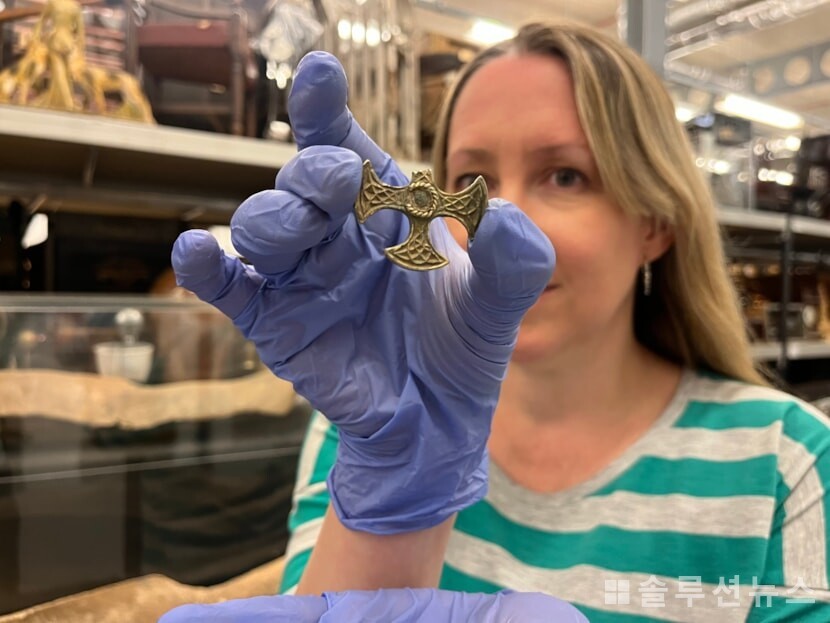The Saxon-era gold-plated cross pendant, believed to have been crafted in the 8th century, was unearthed near Leeds in the northern part of Yorkshire, England. The pendant is made of silver, with a thin layer of gold applied to its surface. It is currently held by Leeds City Museum and is expected to be displayed to the public later this year.

The pendant was found in 2024 by a metal detector enthusiast in a field near Leeds. It is in the shape of a cross, with one arm damaged, and the central decorative stone is missing. Both sides of the artifact feature intricate Saxon patterns and it is designed to be worn around the neck.
Kat Baxter, the curator of archaeology at Leeds City Museum, stated, “The intricate decoration on both sides suggests it was worn as a necklace,” adding, “It is presumed to have been worn by a person of high status. It appears to have been made for the purpose of externally displaying religious identity.”
The museum suspects that the artifact was created during the time when Leeds was part of the Saxon kingdom of Northumbria. In addition to this pendant, other discoveries in the same area are contributing to the understanding of the social and religious background of early medieval northern England’s inhabitants.
According to the Treasure Act 1996 of the UK, the pendant was secured by Leeds City Museum through the Portable Antiquities Scheme. The acquisition of funds was supported by donations from Arts Council England, the Leeds Philosophical and Literary Society, and the Friends of Leeds City Museums.
Leeds has seen various archaeological discoveries in recent years. In 2022, a lead coffin over 1,600 years old and more than 60 sets of remains were unearthed near Garforth. Inside the coffin was a woman aged between 25 to 35 years, adorned with bracelets, a glass bead necklace, rings, or earrings.
In 2012, seven artifacts dating from the 7th to 11th centuries were found in the Leeds area. Five of these were high-end gold jewelry, presumed to have been worn by individuals of considerable wealth in Saxon society.
Kat Baxter remarked, “This cross provides evidence of a person of high status residing in the Leeds area during that time. Responsible metal detecting and the Portable Antiquities Scheme are playing vital roles in regional historical research.”
Salma Arif, a member of Leeds City Council, expressed gratitude, saying, “This artifact offers new insights into the history of Leeds,” adding, “We are thankful to the patrons and citizens for aiding in the collection of such significant artifacts.”